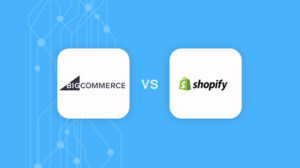Are you looking for a quick and easy way to migrate data from Google Search Console to Amazon redshift? A cloud data pipeline like Daton can make this data migration simpler.
With increasing competition, a data-driven approach is of paramount importance in this digital era. E-Commerce companies specifically need to utilize their data to the fullest to stay ahead of their competition, reduce operational costs, increase efficiency and get better insights to make data-driven business decisions. So, it becomes necessary to understand the demand and supply trends, maximize revenue, get more ROIs out of Ad campaigns, and offer an engaging and seamless customer experience.
Top companies get a complete picture of the business by analyzing all the data from the various apps and tools they use. Reporting and data analysis usually take a lot of time and effort to execute manually. Yet, often the reports are instant and accurate. Thus companies lose out on potential revenue. Data consolidation enables easier reporting and faster analysis. Integrating all the different sources into the Redshift data warehouse is a complicated manual process unless done with an effective data pipeline. Daton is a highly automated data pipeline that easily fetches data from Google Search Console into Amazon Redshift without requiring any coding or maintenance.
Why integrate Google Search Console to Amazon Redshift
Organic search plays a huge part in most businesses’ website performance; it is a critical component of the buyer funnel. Organic traffic has the highest conversion rates in most cases and plays a vital part in establishing a brand’s online presence. Google Search Console helps measure your site’s Search traffic and performance, fix issues, and make your website shine in Google Search results. It generates large amounts of data like Impressions, Clicks, Keyword Performance, and SERP rankings. These data need to be analyzed along with data generated from other sources to get a clear picture of the business, which helps in optimizing the business. It thus becomes essential for enterprises to tally the data coming from Google Search Console along with data generated from other apps and tools such as customer support platforms, website, inventory management, payment gateways, and CRMs.
Consolidate all these data to have a complete understanding of the business, customer demands Ad performance and identify areas of improvement. Since different data silos are being created for various tools, it makes generating reports and analyzing these data difficult and time-consuming. Top companies are reducing the time & effort of reporting and analyzing their multiple data silos by integrating these massive amounts of data from Google Search Console and other tools used by Amazon Redshift. Integration makes the process of reporting generation and analysis simpler. In this post, we will be looking at methods to extract data from Google Search Console to use it for further study in Amazon Redshift.
Google Search Console Overview
Google Search Console was formerly known as Google Webmaster Central or Google Webmaster Tools until 2015. It is a search engine optimization software that enables webmasters to monitor and maintain their websites through an official portal. Features include information about search appearance, crawl data, search traffic, technical status updates, and additional educational resources.
The tools and data provided directly by the search engines can optimize your website easily. Search Console offers tools that help with day-to-day management. It allows submitting and monitoring XML sitemaps, ask Google to assess your errors or analyze how Google views particular pages and URLs on your site. Your Google Search Console account is full of valuable information, such as mobile usability reports and clickthrough tracking. These data will help you understand how your website is performing and ranking in search results. You can extract and integrate data from Google Search Console into other systems like data warehouses and Google Analytics.
Amazon Redshift Overview
Amazon Web Services (AWS) is the first public cloud provider to offer a cloud-based, petabyte-scale data-warehousing service. AWS Athena, Amazon Redshift Spectrum and Amazon S3 complement Amazon Redshift and offer all the technologies needed to build a data warehouse or data lake on an enterprise scale. It also provides a robust data load management console, allows connections from any SQL client, and supports several business intelligence tools to connect to the service.
How to replicate Google Search Console to Amazon Redshift
There are two ways in which you can replicate Google Search Console to Amazon Redshift warehouse.
Build Your Own data pipeline
Building an in-house data pipeline needs a lot of effort, time, experience and manpower with higher chances of errors. You need to extract data using Google APIs & then connect it properly with the Amazon Redshift data warehouse.
Use Daton to integrate Google Search Console & Amazon Redshift
Utilize Daton to integrate Google Search Console & Amazon Redshift is the quickest & easiest way to save your time and efforts. Leveraging a cloud data pipeline like Daton to simplify and accelerate the time it takes to build automated reporting.
Configuring data replication on Daton on only takes a few minutes and a few clicks. Analysts do not have to write any code or manage any infrastructure, yet they can get access to their Google Search Console data in a few hours.Daton’s simple and easy to use interface allows analysts and developers to use UI elements to configure data replication from Google Search Console data into Amazon Redshift.
Daton takes care of:
- Authentication
- Table creation, deletion & reloads
- Refreshing access tokens,
- Sampling,
- Historical data load,
- Rate limits,
- Incremental data load,
- Notifications
and many more important functions that are required to enable analysts to focus on analysis rather than worry about the data that is delivered for analysis.
Steps to Integrate Google Search Console with Daton

1. Sign in to Daton
2. Select Google Search Console from the Integrations page
3. Provide Integration Name, Replication Frequency, and History. Integration name would be used in creating tables for the integration and cannot be changed later
4. You will be redirected to Google Search Console login for authorizing Daton to extract data periodically
5. Post successful authentication, you will be prompted to choose from the list of available Google Ad accounts
6. Select required tables from the available list of tables
7. Then select all required fields for each table
8. Submit the integration
Sign up for a trial of Daton Today!
Here are more reasons to explore Daton for Google Search Console to Amazon Redshift Integration
- Faster Integration of Google Search Console to Amazon Redshift– Google Search Console to Amazon Redshift is one of the integrations Daton can handle very fast and seamlessly. By following few steps you can easily connect Google Search Console to Amazon Redshift.
- Low Effort & Zero Maintenance – Daton automatically takes care of all the data replication processes and infrastructure once you sign up for a Daton account and configure the data sources. There is no infrastructure to manage or no code to write.
- Robust Scheduling Options: allows you to schedule jobs based on their requirements using a simple configuration step.
- Flexible loading options allows to you optimize data loading behavior to maximize storage utilization and easy of querying.
- Data consistency guarantee and an incredibly friendly customer support team ensure you can leave the data engineering to Daton and focus instead of analysis and insights!
- Support for all major cloud data warehouses including Google BigQuery, Amazon Redshift, Snowflake, Oracle Autonomous Data Warehouse, PostgreSQL and more.
- Enterprise grade data pipeline at an unbeatable price to help every business become data driven. Get started with a single integration today for just $10 and scale up as your demands increase.
- Enterprise grade encryption gives your peace of mind.
- Support for 100+ data sources – In addition to Google Search Console, Daton can extract data from a varied range of sources such as Sales and Marketing applications, Databases, Analytics platforms, Payment platforms and much more. Daton will ensure that you have a way to bring any data to Amazon Redshift and generate relevant insights.
- Server-Side Encryption (SSE): SSE-S3 and SSE-KMS, which encrypt data stored in S3 buckets using S3-managed encryption keys or KMS-managed keys, are supported by Amazon Redshift.
- Client-Side Encryption: Using client-side encryption, you encrypt data on your client application or server before uploading it to Amazon Redshift. To manage your encryption keys, you may use any compatible encryption tool with Amazon KMS.
- SSL Encryption: For data in transit, Amazon Redshift provides SSL encryption. SSL uses industry-standard encryption techniques to encrypt data transmitted between Amazon Redshift and client apps.
- Redshift Spectrum Encryption: Redshift Spectrum additionally supports SSL encryption for data in transit and SSE-S3 or SSE-KMS encryption of data stored in Amazon S3.













